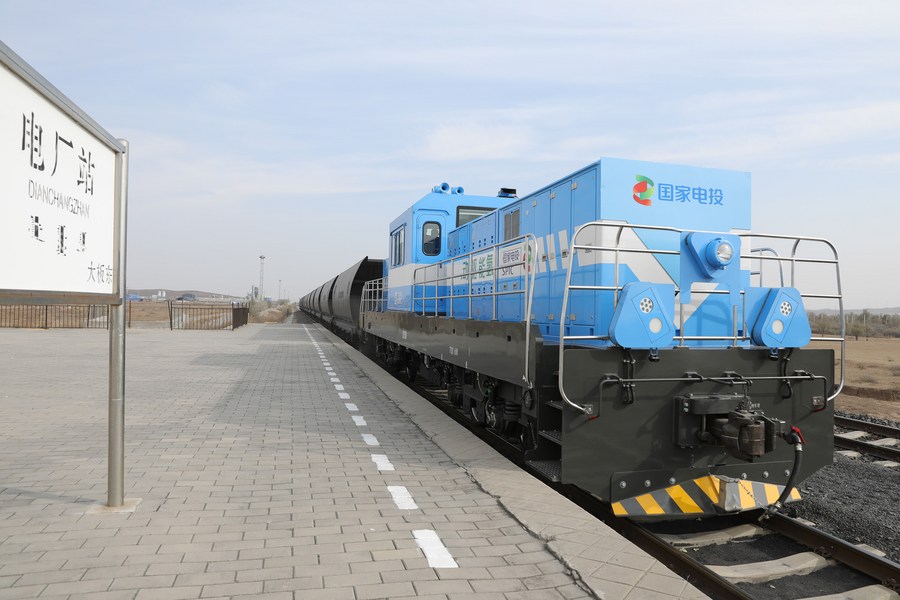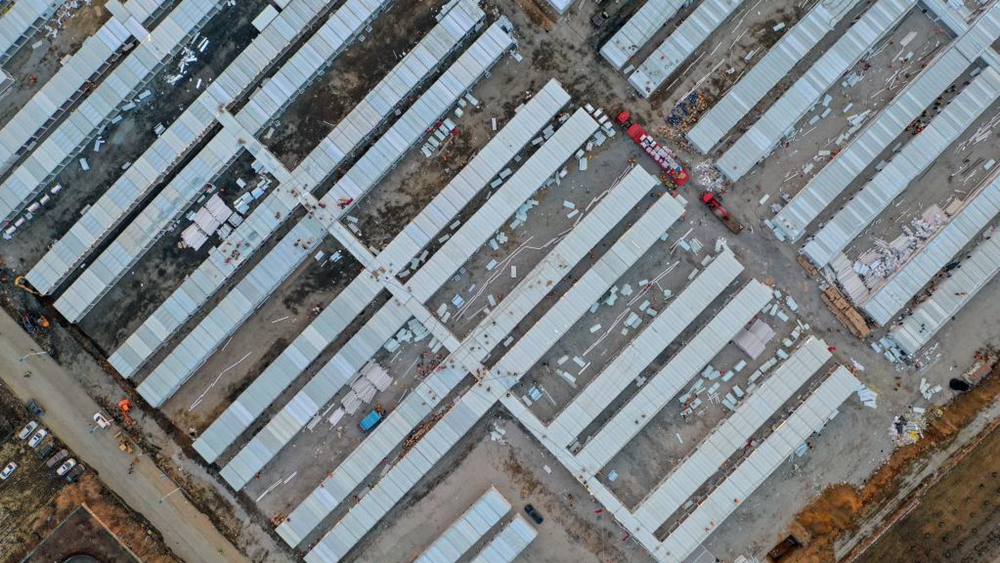
Photo taken on Oct. 29, 2021 shows the first China-developed hydrogen fuel cell hybrid locomotive in a trial run in north China's Inner Mongolia Autonomous Region. (Xinhua)
BEIJING, March 23 (Xinhua) -- Chinese authorities on Wednesday released a plan on the development of hydrogen energy for the 2021-2035 period as the country races toward its carbon peaking and neutrality goals.
By 2025, China will put in place a relatively complete hydrogen energy industry development system, with the innovation capability significantly improved and the core technologies and manufacturing processes basically mastered, according to the plan jointly released by the National Development and Reform Commission and the National Energy Administration.
Annual hydrogen production from renewable energy is expected to reach 100,000 tonnes to 200,000 tonnes to become an important part of new hydrogen energy consumption by 2025 and enable carbon dioxide emission reduction of 1 million to 2 million tonnes per year.
By 2030, China is seeking a reasonable and orderly industrial layout and wide use of hydrogen production from renewable energy to offer solid support for the carbon peaking goal.
By 2035, the proportion of hydrogen produced from renewable energy in terminal energy consumption will increase significantly, which will play an important supporting role in the country's green energy transformation, according to the plan.
Hydrogen is a secondary source of energy that usually requires a primary energy input to be produced on an industrial scale. Depending on the source from which it is produced, hydrogen can be gray, blue or green, and green hydrogen is the only type produced in a climate-neutral manner that could reduce emissions.
Globally, hydrogen has become an important strategic choice for major developed economies seeking to accelerate their energy transformation and upgrading.
China is currently the largest hydrogen producer in the world, with an annual production output of about 33 million tonnes, but most of the hydrogen comes from fossil fuels.
The plan acknowledged that China's hydrogen energy industry is still in its infancy, facing multiple problems such as weak innovation capabilities, low level of technical equipment and insufficient basic support for industrial development.
"Against the backdrop of carbon peaking and neutrality, developing hydrogen from fossil energy is obviously not the main direction. Hydrogen produced from renewable sources will become an important aspect in the future," said Gan Yong, an academician of the Chinese Academy of Engineering.
As China boasts the world's largest installed capacity of renewable power, there is huge potential for the supply of green hydrogen.
The China Hydrogen Alliance earlier estimated that the scale of China's hydrogen energy market will reach 43 million tonnes by 2030. Green hydrogen will increase from 1 percent of energy in 2019 to 10 percent, and the market scale will increase nearly 30 times.
Many local governments have been on the move to tap the market potential.
In August last year, the Beijing Municipal Bureau of Economy and Information Technology said the capital city plans to have five to eight hydrogen energy enterprises with international influence by 2023.
Shanghai plans to have nearly 100 hydrogen stations and 10,000 vehicles powered by hydrogen fuel cells by 2023. Guangdong has proposed the promotion of the large-scale application of hydrogen fuel cell vehicles and the accelerated construction of hydrogen refueling stations, with 300 hydrogen stations planned for the Pearl River Delta and its coastal economic belt. ■












